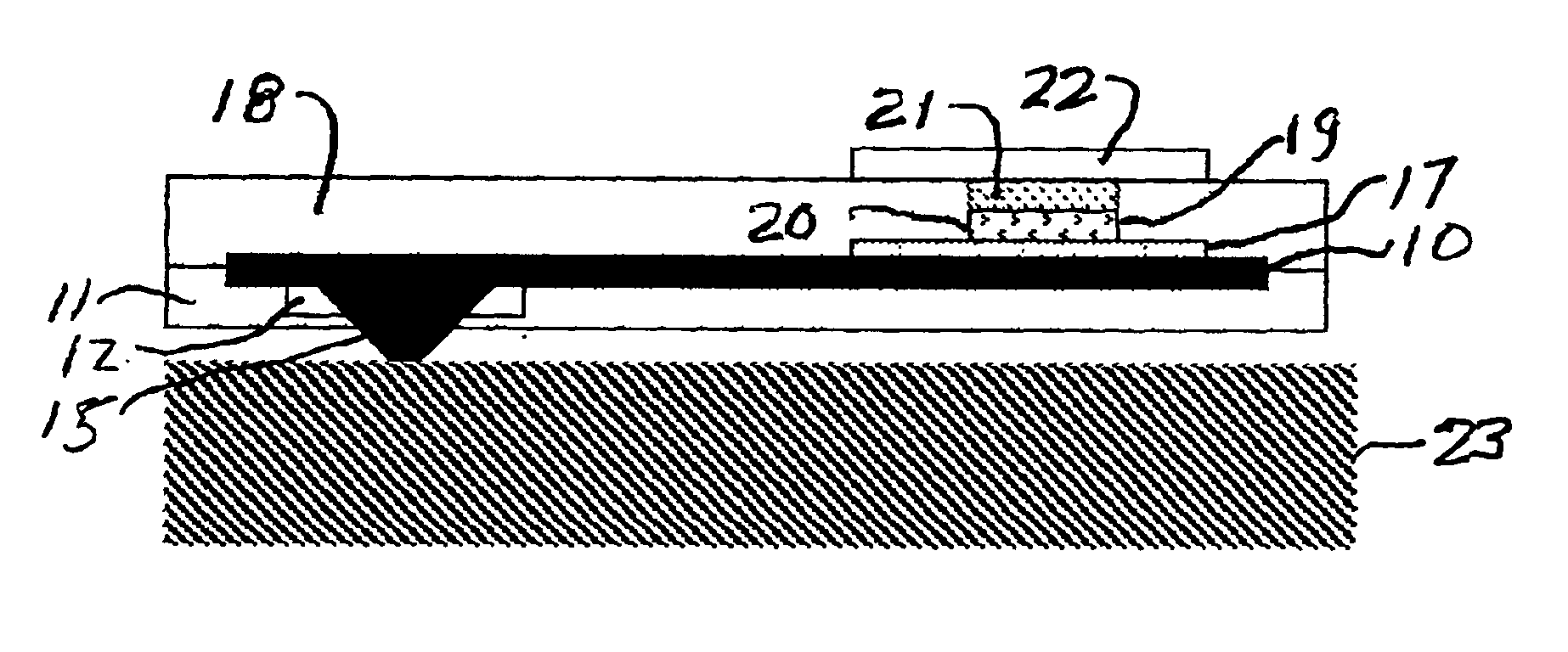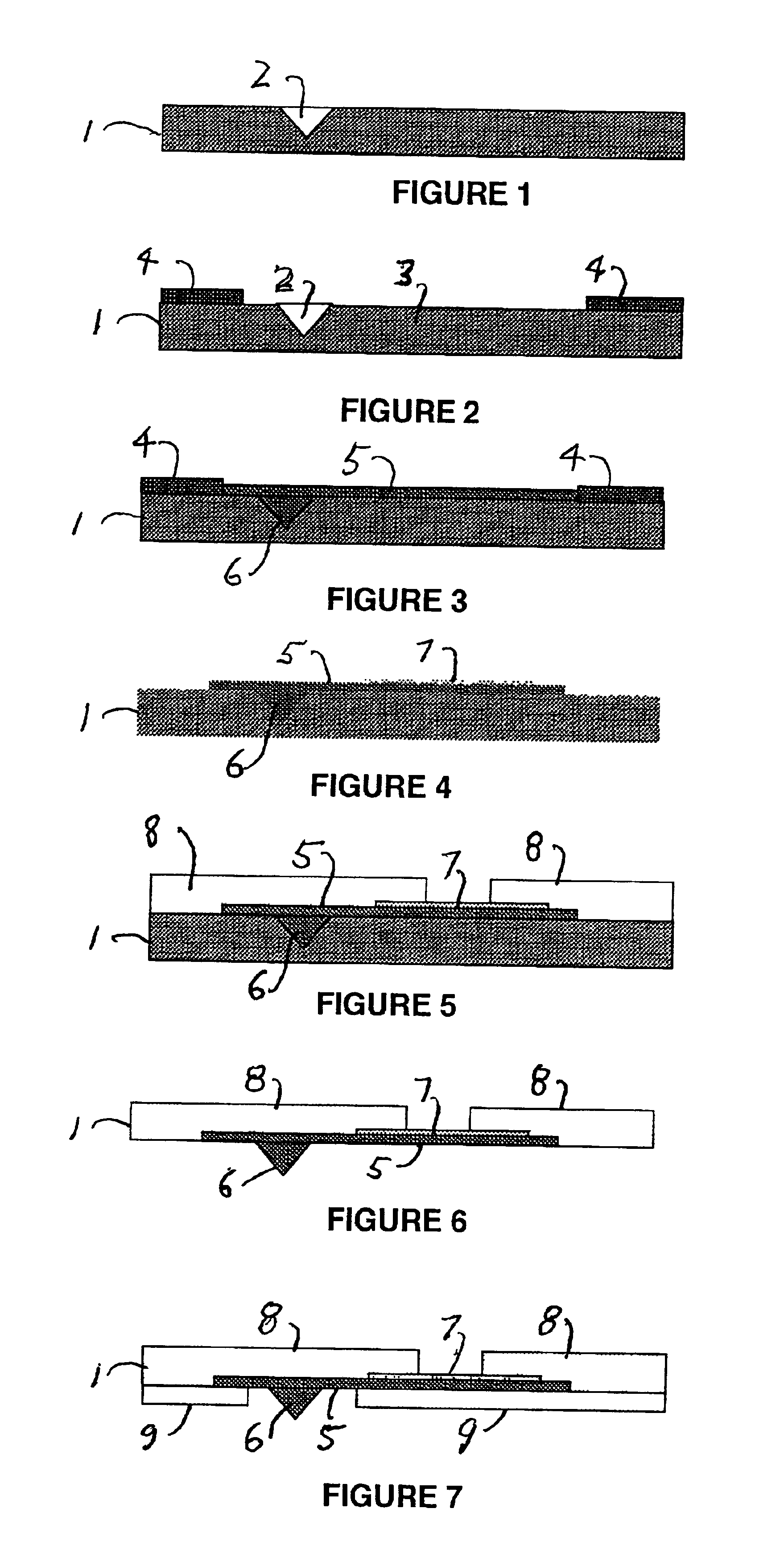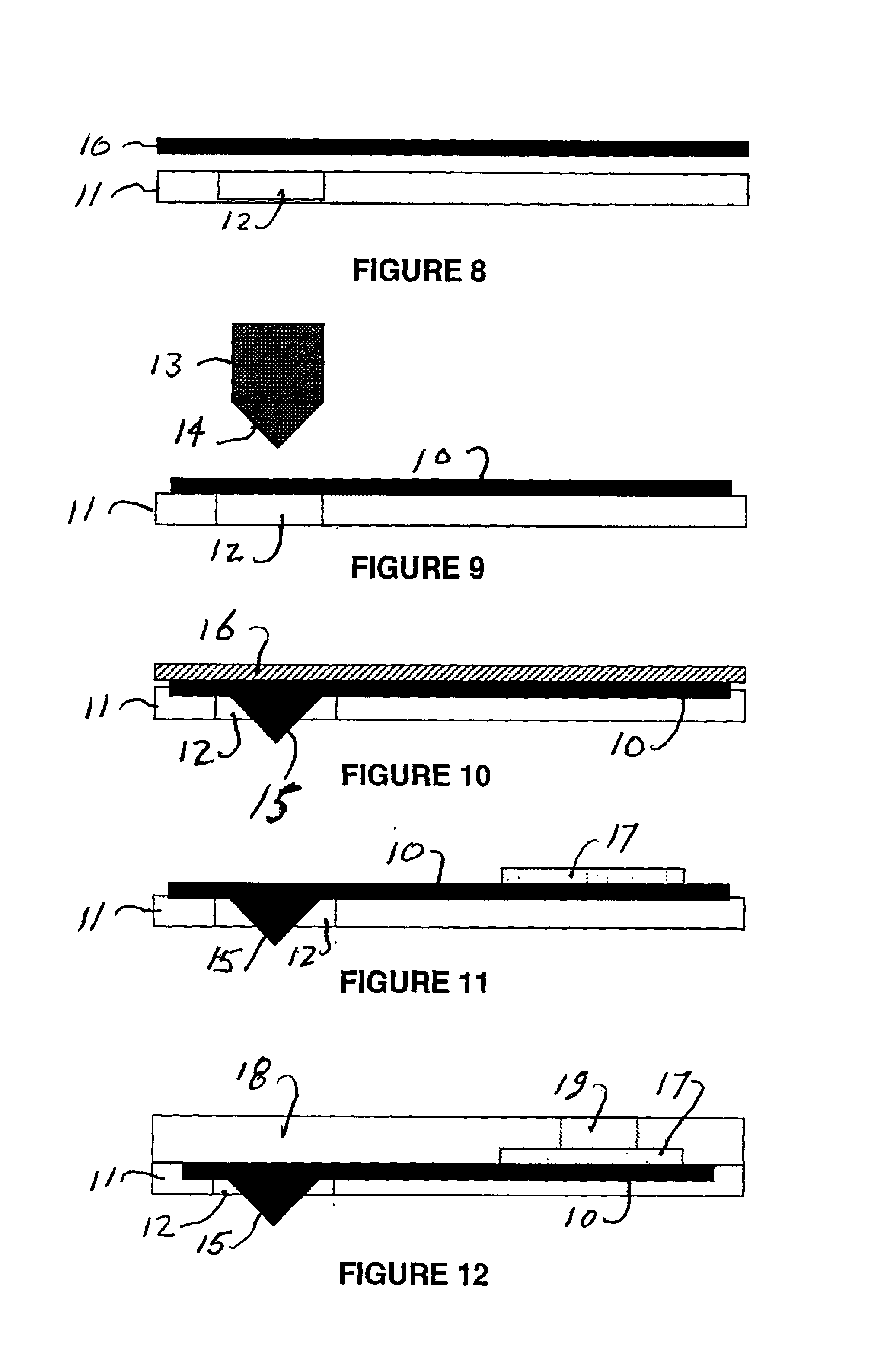Electrochemical microsensor package
- Summary
- Abstract
- Description
- Claims
- Application Information
AI Technical Summary
Benefits of technology
Problems solved by technology
Method used
Image
Examples
Embodiment Construction
The following description illustrates the manner in which the principles of the invention are applied but is not to be construed as limiting the scope of the invention.
The present invention provides for structures or “packages” for electrochemical sensors which will give them improved connectability and reliability. In accordance with this invention these packages may be produced at low cost by batch, modular-manufacturing methodology. With this methodology of this identical miniaturized fluidic devices may be fabricated on a single large sheet with a yield substantially increased over conventional substrates. The individual devices may then be separated and used individually or placed in arrays, such as to produce multiple analyte sensor arrays, using pick and place technology.
The sensor packages of this invention have a non-conductive matrix in which is provided a sensor well for containing sensing chemicals and a sensing electrode at the bottom of the well. A conductive trace is ...
PUM
| Property | Measurement | Unit |
|---|---|---|
| Pressure | aaaaa | aaaaa |
| Electrical conductivity | aaaaa | aaaaa |
| Electrical conductor | aaaaa | aaaaa |
Abstract
Description
Claims
Application Information
 Login to View More
Login to View More - R&D
- Intellectual Property
- Life Sciences
- Materials
- Tech Scout
- Unparalleled Data Quality
- Higher Quality Content
- 60% Fewer Hallucinations
Browse by: Latest US Patents, China's latest patents, Technical Efficacy Thesaurus, Application Domain, Technology Topic, Popular Technical Reports.
© 2025 PatSnap. All rights reserved.Legal|Privacy policy|Modern Slavery Act Transparency Statement|Sitemap|About US| Contact US: help@patsnap.com



